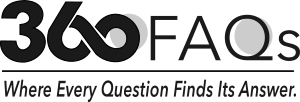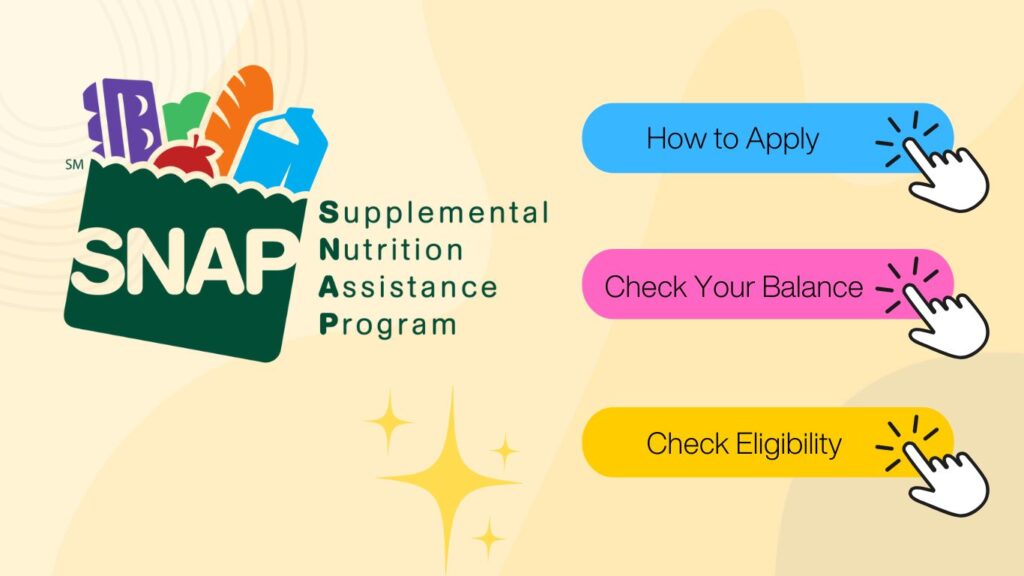The Supplemental Nutrition Assistance Program (SNAP), formerly known as food stamps, is a federal assistance program designed to help low-income individuals and families afford nutritious food. If you’re wondering how to apply for SNAP benefits, check your balance, determine eligibility, or whether SNAP benefits will increase in the future, this comprehensive guide has you covered. Let’s dive in!
How to Apply for SNAP Benefits
Applying for SNAP benefits is a straightforward process, but it requires careful preparation. Here’s a step-by-step guide:
Step 1: Check Your Eligibility
Before applying, ensure you meet the eligibility criteria. SNAP eligibility is based on factors such as:
- Income limits: Your household income must be at or below 130% of the federal poverty level.
- Resource limits: Most households must have resources (e.g., bank accounts) below 2,750 (4,250 if a member is elderly or disabled).
- Work requirements: Able-bodied adults without dependents (ABAWDs) must meet work requirements.
Use the SNAP Eligibility Pre-Screener Tool on the USDA website to determine if you qualify.
Step 2: Gather Required Documents
You’ll need the following documents to complete your application:
- Proof of identity (e.g., driver’s license, passport).
- Proof of income (e.g., pay stubs, tax returns).
- Proof of expenses (e.g., rent, utilities, childcare costs).
- Social Security numbers for all household members.
Step 3: Submit Your Application
You can apply for SNAP benefits in one of three ways:
- Online: Visit your state’s SNAP website or use the Benefits.gov portal.
- In-Person: Visit your local SNAP office.
- By Mail: Request a paper application from your state agency and mail it back.
Step 4: Complete the Interview
After submitting your application, you’ll need to complete an interview with a caseworker. This can be done over the phone or in person. Be prepared to answer questions about your household, income, and expenses.
Step 5: Receive Your EBT Card
If approved, you’ll receive an Electronic Benefits Transfer (EBT) card, which works like a debit card to purchase eligible food items at authorized retailers.
How to Check Your SNAP Balance
Once you’re enrolled in SNAP, it’s important to keep track of your benefits. Here’s how to check your SNAP balance:
- Check Your Receipt: Your current balance is printed on your grocery receipt after each purchase.
- Call the EBT Customer Service Number: Dial the number on the back of your EBT card to hear your balance.
- Use the Mobile App: Many states offer mobile apps to check your balance and transaction history.
- Log In Online: Visit your state’s EBT website to view your balance and recent transactions.
How to Determine SNAP Benefits Eligibility
SNAP eligibility is determined by several factors, including income, household size, and expenses. Here’s a breakdown:
1) Income Limits
Your gross monthly income must be at or below 130% of the federal poverty level. For example, as of 2023:
- Household of 1: $1,580/month.
- Household of 4: $3,250/month.
2) Resource Limits
Most households must have resources below 2,750 (4,250 if a member is elderly or disabled). Resources include cash, bank accounts, and investments, but exclude your home and retirement savings.
3) Deductions
Certain expenses can be deducted from your income to increase your benefit amount, such as:
- 20% of earned income.
- Standard deduction ($193 for most households in 2023).
- Dependent care costs.
- Medical expenses for elderly or disabled members.
4) Work Requirements
Able-bodied adults without dependents (ABAWDs) must work at least 20 hours per week or participate in a work program to receive benefits for more than 3 months in a 36-month period.
Will SNAP Benefits Increase in the Future?
SNAP benefits are adjusted annually to reflect changes in the cost of living. In 2023, the average monthly benefit increased by about 12.5% due to inflation adjustments. While future increases depend on economic conditions and federal policy, here’s what to expect:
- Annual Cost-of-Living Adjustments: Benefits are likely to increase slightly each year to keep up with inflation.
- Policy Changes: Congress may pass legislation to expand or reduce SNAP benefits based on national priorities.
For the latest updates, visit the USDA SNAP website or follow news from trusted sources like the Center on Budget and Policy Priorities (CBPP).
Tips for Maximizing Your SNAP Benefits
Stretching your SNAP benefits to ensure you and your family have enough nutritious food throughout the month requires careful planning and smart shopping strategies. Here are some detailed tips to help you make the most of your SNAP benefits:
1. Shop Smart: Prioritize Nutritious, Cost-Effective Foods
When using your SNAP benefits, focus on purchasing foods that are both nutritious and affordable. Here’s how:
- Buy in Bulk: Items like rice, beans, lentils, oats, and pasta are often cheaper when bought in bulk and have a long shelf life. These staples are versatile and can be used in a variety of meals.
- Choose Seasonal Produce: Fruits and vegetables that are in season are usually cheaper and fresher. For example, buy apples in the fall and berries in the summer.
- Frozen and Canned Foods: Frozen fruits and vegetables are just as nutritious as fresh ones and often cost less. Canned beans, tomatoes, and fish (like tuna or salmon) are also budget-friendly and shelf-stable.
- Whole Grains: Opt for whole grains like brown rice, whole wheat bread, and quinoa. They are more nutritious and filling than refined grains.
- Protein on a Budget: Eggs, peanut butter, canned beans, and chicken legs or thighs are affordable sources of protein.
- Avoid Pre-Packaged Foods: Pre-cut fruits, vegetables, and pre-packaged meals are convenient but often more expensive. Buy whole foods and prepare them at home to save money.
2. Use Discounts and Incentive Programs
Many programs and retailers offer discounts or incentives for SNAP users, helping you stretch your benefits further:
- Double Up Food Bucks: This program matches the value of SNAP benefits spent at participating farmers’ markets, allowing you to get more fresh produce. For example, if you spend 10inSNAPbenefits,yougetanadditional10inSNAPbenefits,yougetanadditional10 to buy fruits and vegetables.
- SNAP-Ed Programs: Some states offer free nutrition education programs that teach you how to shop and cook on a budget. Check if your state has a SNAP-Ed program.
- Store Discounts: Some grocery stores offer discounts or loyalty programs for SNAP users. Ask at your local store if they have any special deals.
- Online Shopping: Many retailers, like Amazon, Walmart, and Aldi, now accept SNAP benefits for online grocery orders. Look for discounts or free delivery options.
3. Meal Plan to Stretch Your Benefits
Planning your meals in advance can help you avoid food waste and ensure you use your SNAP benefits efficiently. Here’s how to get started:
- Create a Weekly Menu: Plan meals for the week based on what’s on sale at your local grocery store. Include breakfast, lunch, dinner, and snacks.
- Make a Shopping List: Stick to your list to avoid impulse purchases. Organize it by food categories (produce, dairy, grains, etc.) to make shopping faster.
- Cook in Bulk: Prepare large batches of meals like soups, stews, or casseroles and freeze portions for later. This saves time and money.
- Use Leftovers: Repurpose leftovers into new meals. For example, use roasted chicken from dinner to make chicken salad for lunch the next day.
- Track Your Spending: Keep track of how much you spend each month on groceries and adjust your meal plan to stay within your SNAP budget.
4. Take Advantage of Community Resources
Many communities offer additional resources to help SNAP users access nutritious food:
- Food Pantries and Banks: These organizations provide free food to those in need. Some even offer fresh produce, dairy, and meat.
- Community Gardens: If you have the time and space, consider joining a community garden to grow your own fruits and vegetables.
- Free or Low-Cost Cooking Classes: Some organizations offer classes to teach you how to cook healthy meals on a budget.
5. Avoid Common Pitfalls
- Don’t Shop When Hungry: Shopping on an empty stomach can lead to impulse buys and overspending.
- Compare Prices: Check unit prices (price per ounce or pound) to find the best deals.
- Limit Junk Food: SNAP benefits can be used to buy snacks and sugary drinks, but these items provide little nutritional value. Focus on buying whole, nutrient-dense foods instead.
If you found this guide helpful, share it with someone who might benefit from SNAP assistance. For more information, visit your state’s SNAP website or explore resources on Benefits.gov. Have questions? Leave a comment below, and we’ll be happy to help!

